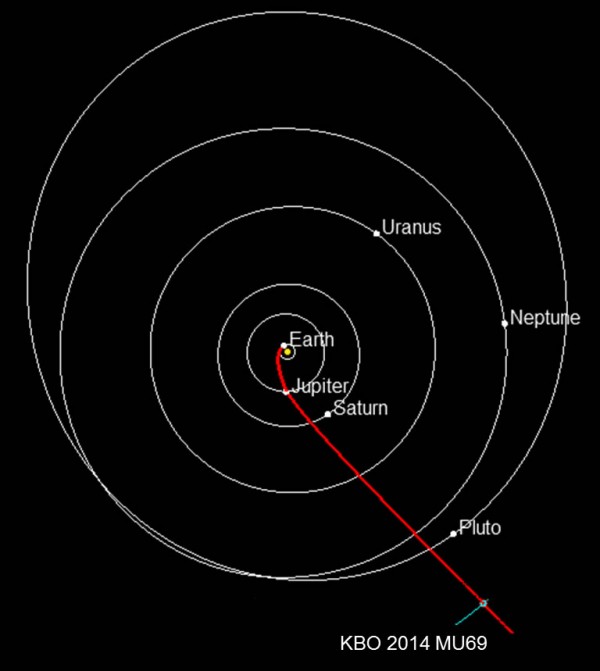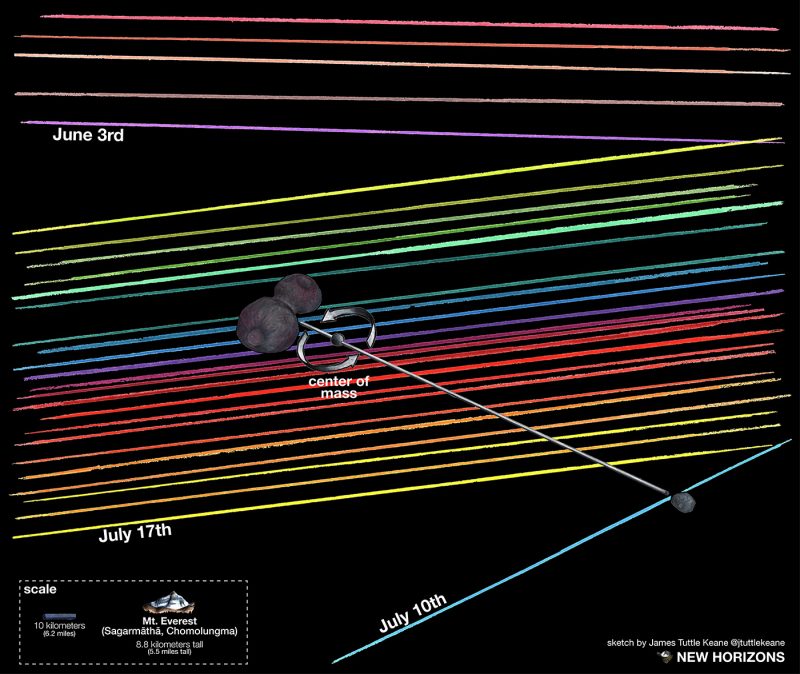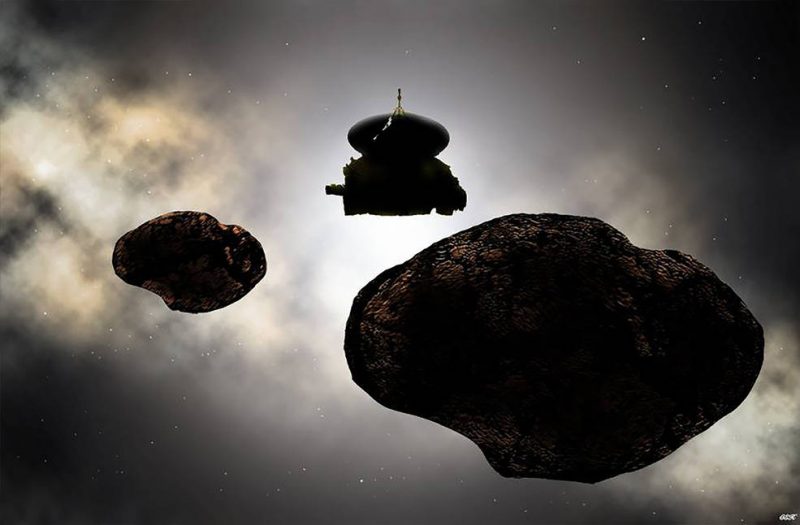
One year from today – on January 1, 2019 – the famous Pluto spacecraft called New Horizons will encounter its next target, some billion miles (1.6 billion km) past Pluto, a Kuiper Belt object designated 2014 MU69. New Horizons’ science team has been abuzz since last summer, when the team learned via an occultation of a star by MU69 that this remote and tiny object might be either peanut-shaped or even two objects orbiting one another. In other words, perhaps MU69 is like a binary asteroid (aka an asteroid with a moon).
In December, New Horizons science team member Marc Buie of the Southwest Research Institute in Boulder, Colorado offered an update on scientists’ thoughts about MU69 at the fall meeting of the American Geophysical Union in New Orleans. He said in a statement:
We really won’t know what MU69 looks like until we fly past it, or even gain a full understanding of it until after the encounter. But even from afar, the more we examine it, the more interesting and amazing this little world becomes.
In particular, data collected during a July 10, 2017 occultation of a star by MU69 has led scientists to suspect MU69 might be binary. Scientists were aboard NASA’s airborne Stratospheric Observatory for Infrared Astronomy (SOFIA) – flying over the Pacific Ocean – when they saw what appeared to be a very short drop-out in the star’s light prior to the expected occultation. Buie said further analysis of that data, including syncing it with MU69 orbit calculations provided by the European Space Agency’s Gaia mission, opens the possibility that the “blip” SOFIA detected could be another object orbiting around MU69. Buie commented:
A binary with a smaller moon might also help explain the shifts we see in the position of MU69 during these various occultations. It’s all very suggestive, but another step in our work to get a clear picture of MU69 before New Horizons flies by … a year from now.
Read more about what the occultation data showed, via New Horizons


By the way, the New Horizons team was looking this past fall for your ideas on an informal name for 2014 MU69. The voting is closed now, but the announcement of the winner is expected soon; it wouldn’t surprise me if it came today. Meanwhile, you can see the 37 names being considered by the team, and see the results of the voting.
At present, Mjölnir – the name of Thor’s hammer in Norse mythology – is leading the pack by a substantial margin. Pronunciation here.
Read more about the voting on a nickname for 2014 MU69
Thus the Kuiper Belt object MU69, discovered as recently as 2014, is poised to become much better known. This object is more than 4 billion miles (6.5 billion km) from Earth. It appears to be no more than 20 miles (30 km) long, or, if a binary, each about 9-12 miles (15-20 km) in diameter.
We live in a wondrous age!

Bottom line: The New Horizons spacecraft will sweep closest to Kuiper Belt object 2014 MU69 one year from today, on January 1, 2019.











